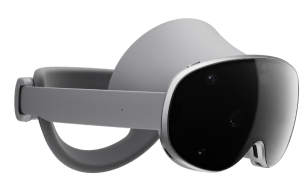Samsung Galaxy XR Review – The First Android XR Headset Arrives
Samsung has taken a major step into the extended‑reality space with the Galaxy XR, officially announced on October 21 2025 in the U.S. and October 22 in Korea. This headset represents the first commercial device built on the Android XR platform (in collaboration with Google and Qualcomm). It integrates the Gemini AI assistant, supports high‑resolution dual micro‑OLED displays, and aims to merge virtual and augmented reality experiences. With a starting price of US$1,799, it positions itself as a premium product for early adopters of spatial computing.
Key Specifications
| Spec | Details |
|---|---|
| Platform | Android XR platform (Samsung + Google) |
| Chipset | Qualcomm Snapdragon XR2+ Gen 2 |
| Memory & Storage | 16 GB RAM + 256 GB storage |
| Displays | Dual micro‑OLED, resolution 3552×3840 per eye (~27‑29 million pixels total) |
| Refresh Rate | Up to 90 Hz |
| Field of View | Approx. 109° horizontal / 100° vertical |
| Tracking & Sensors | Eye‑tracking, hand/gesture tracking, world‑facing cameras, depth & IMU sensors |
| Audio | Stereo speakers + six‑mic array for spatial audio |
| Battery / Power | External battery pack; runtime ~2–2.5 hours |
| Price & Availability | US$1,799 in the U.S. from Oct 21 via Samsung.com and Experience Stores |
What It Does Well
1. Platform & Ecosystem
The Galaxy XR is more than just hardware—it launches the Android XR platform in earnest. With Google’s backing and Samsung’s hardware muscle, the device gives access to the Google Play ecosystem while bringing Gemini AI into the XR experience. Early impressions highlight integrations like Google Maps in immersive mode, Gemini voice/gesture control, and 3D app interactions.
2. Display & Immersion
With dual high‑resolution micro‑OLED displays and a wide field of view, the visual experience is outstanding. Clarity and color reproduction rival the Apple Vision Pro at a much lower price. The 90 Hz refresh rate ensures smooth motion and realistic depth in both VR and AR content.
3. Value Positioning
At US$1,799, the Galaxy XR offers a competitive entry into high‑end XR tech. Compared to rivals like the Vision Pro (~US$3,499), Samsung’s pricing makes extended reality more accessible without cutting corners on design or core performance.
4. Tracking & Interaction
The inclusion of eye‑tracking, gesture control, and multiple world‑facing cameras enables accurate spatial interaction. Users can seamlessly switch between immersive VR environments and pass‑through AR modes for real‑world overlays.
What Could Be Better
- Battery Life: Limited to roughly 2–2.5 hours per charge due to the external pack.
- Refresh Rate: While smooth, it doesn’t match the 120 Hz some competitors offer.
- Ecosystem Maturity: Android XR is new; the app library will take time to expand.
- Accessories: Additional controllers or cases raise overall cost.
Real‑World Perspective
For global users, availability currently focuses on the U.S. and South Korea, with further regions expected soon. The open Android XR platform promises broader accessibility over time. The headset’s versatility suits both entertainment and productivity—whether watching 3D media, designing immersive content, or exploring virtual collaboration spaces.
Final Verdict
The Samsung Galaxy XR is a milestone for mixed reality—blending premium hardware with a more open, Android‑based ecosystem. It delivers superb visuals, strong tracking, and solid ergonomics, though its short battery life and young software ecosystem are limiting factors.
TechDetects Rating: 8.5/10 – A powerful and forward‑looking debut that defines the next phase of Android in XR.
Should You Buy It?

Buy Now If:
- You want to experience cutting‑edge spatial computing with AI integration.
- You’re a creator or enthusiast seeking immersive design and media capabilities.
Wait If:
- You need longer battery life or a larger XR app ecosystem.
Skip If:
- You’re not ready to invest in early‑generation XR hardware or prefer traditional devices.
Recommended: The Future of VR: What to Expect in 2026 and Beyond
In summary: The Galaxy XR doesn’t just showcase Samsung’s engineering—it signals the start of mainstream Android‑powered extended reality. For those curious about immersive technology’s future, this headset is among 2025’s most significant launches. TechDetects will revisit this review once global rollouts and firmware updates mature the experience.
Might want to check it out: Best VR Headsets to Buy in 2025 — Clear Optics, Smooth Tracking, Real‑World Value



